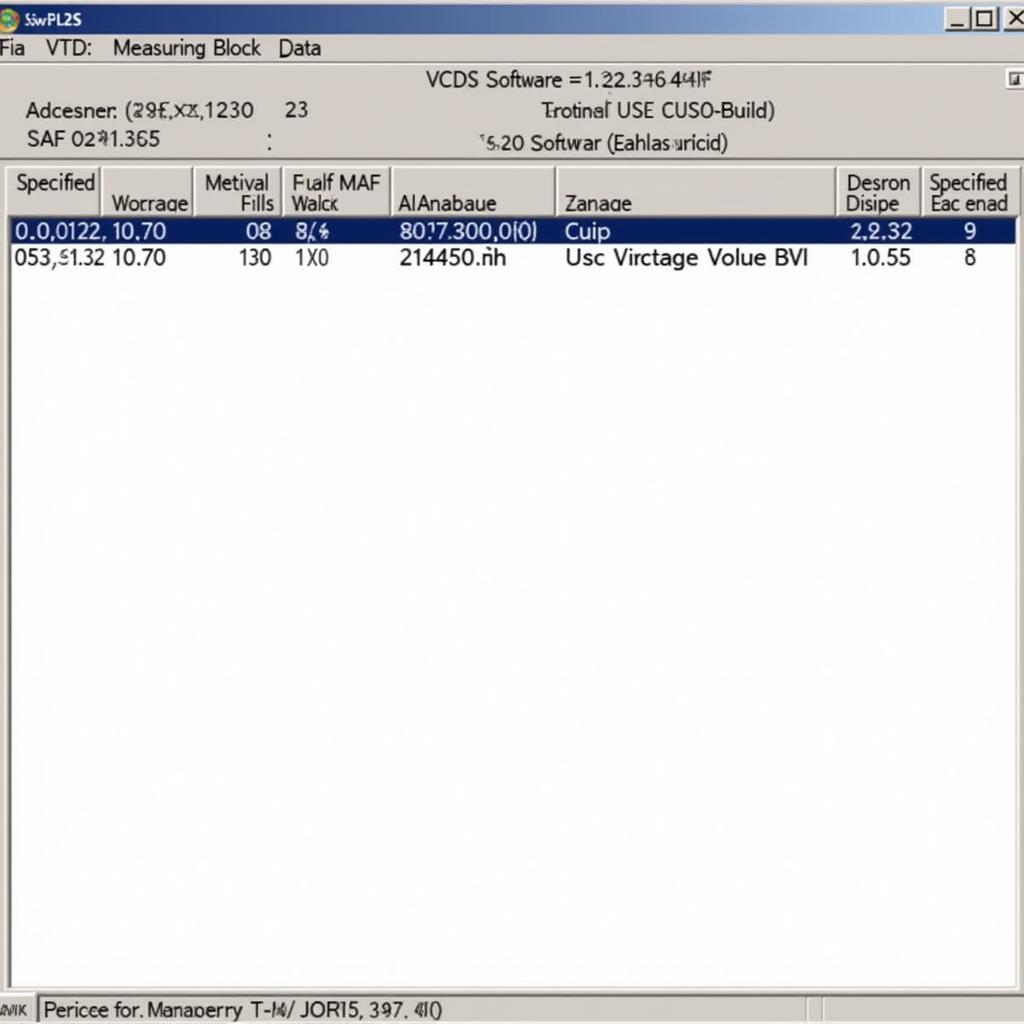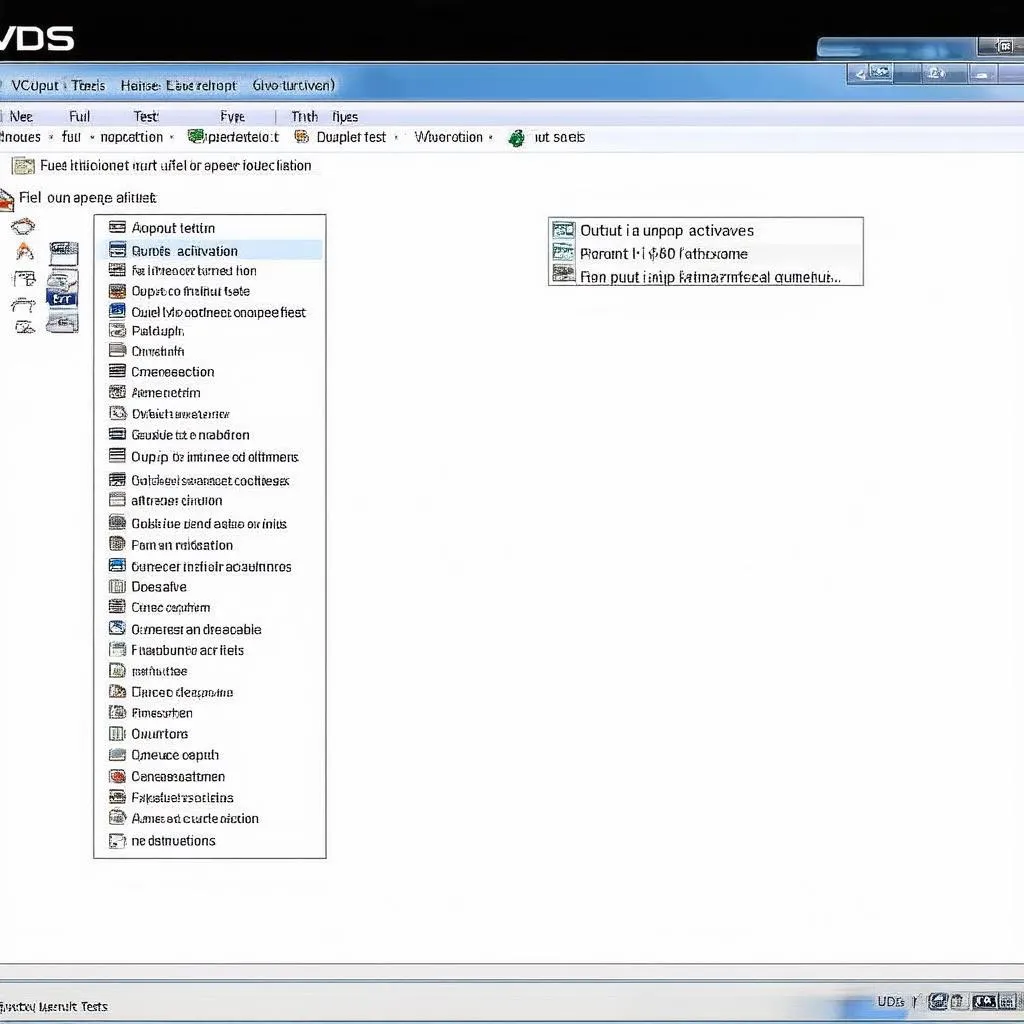The VCDS MAF measuring block is a crucial diagnostic tool for identifying and resolving airflow issues in your vehicle. It provides valuable insights into the performance of your Mass Air Flow (MAF) sensor, allowing you to pinpoint potential problems and ensure optimal engine performance.
A properly functioning MAF sensor is essential for maintaining the correct air-fuel mixture, which directly impacts fuel efficiency, power output, and emissions. By using the VCDS (VAG-COM Diagnostic System) and understanding how to interpret the MAF measuring block data, you can effectively diagnose and address MAF sensor-related problems. This comprehensive guide will walk you through everything you need to know about using the vcds maf measuring block for accurate diagnosis and repair.
Decoding the VCDS MAF Measuring Block Data
The VCDS software allows access to a wealth of real-time data from your vehicle’s various sensors, including the MAF sensor. This data is displayed in “measuring blocks,” which are essentially tables of values representing different parameters. The MAF measuring block specifically focuses on data related to airflow. This information can be crucial in diagnosing issues related to your vehicle’s air intake system. You can even learn how to check your turbo using VCDS with a similar approach found on other parts of our website.
Identifying Key Parameters in the MAF Measuring Block
Within the MAF measuring block, you’ll find several key parameters, each providing crucial information about the MAF sensor’s performance. These parameters typically include:
- Specified MAF Value (mg/str): This is the expected airflow value based on the engine’s current operating conditions.
- Actual MAF Value (mg/str): This represents the actual airflow measured by the MAF sensor.
- MAF Sensor Voltage (V): This indicates the voltage output from the MAF sensor, which corresponds to the measured airflow.
- Air Mass Percentage (%): This shows the percentage of air mass compared to the expected value.
By comparing these parameters, you can quickly identify discrepancies that may indicate a problem with the MAF sensor or related components. For example, a significant difference between the specified and actual MAF values can point to a faulty MAF sensor or an air leak. Similarly, you might find valuable information on vcds mass air flow sensor.
 VCDS MAF Measuring Block Screenshot Displaying Key Parameters
VCDS MAF Measuring Block Screenshot Displaying Key Parameters
Common Problems Indicated by the VCDS MAF Measuring Block
Several common automotive problems can be diagnosed using the vcds maf measuring block. Understanding these issues and how they manifest in the data can save you time and money in the diagnostic process.
Low MAF Readings
Low MAF readings can often indicate a restriction in the air intake system, such as a clogged air filter or a collapsed intake hose. It could also point to a failing MAF sensor itself. Check out our guide on how to check turbo with vcds for related information.
High MAF Readings
High MAF readings are less common but can suggest an air leak after the MAF sensor. This can disrupt the air-fuel mixture and lead to poor performance and increased emissions. This relates to how VCDS can be used to diagnose boost leaks, which you can read about on our page about can vcds see boost leaks.
Fluctuating MAF Readings
Fluctuating MAF readings can be caused by a dirty or damaged MAF sensor, a loose connection in the wiring, or even a vacuum leak.
“In my experience, fluctuating MAF readings are often overlooked, but they can be a crucial indicator of underlying problems,” says Robert Johnson, Automotive Diagnostics Specialist. “A thorough examination of the MAF measuring block is essential for accurate diagnosis.”
Troubleshooting with the VCDS MAF Measuring Block
The vcds maf measuring block provides a powerful tool for troubleshooting MAF sensor-related problems. By following a systematic approach, you can quickly pinpoint the source of the issue. This information also applies to other diagnostic procedures, such as using VCDS for a 2001 Jetta TDI which you can find information about on what is vcds code reader for 2001 jetta tdi.
Step-by-Step Guide to Using the VCDS MAF Measuring Block
- Connect your VCDS interface to your vehicle’s OBD-II port.
- Launch the VCDS software and select your vehicle model.
- Navigate to the “Engine” module and select “Measuring Blocks.”
- Locate the MAF measuring block (the specific block number may vary depending on your vehicle).
- Observe the values for the key parameters discussed earlier.
- Compare the actual and specified MAF values, looking for significant discrepancies.
- Check for unusual fluctuations in the MAF readings.
“A common mistake I see is technicians focusing solely on the MAF sensor itself,” notes Sarah Miller, Senior Automotive Technician. “Remember to consider the entire air intake system, as other components can impact MAF readings.” Learn more on this topic on our vcds maf page.
 Mechanic Using VCDS to Diagnose MAF Sensor Issues
Mechanic Using VCDS to Diagnose MAF Sensor Issues
Conclusion: Mastering the VCDS MAF Measuring Block
The vcds maf measuring block offers a valuable resource for diagnosing and resolving airflow issues in your vehicle. By understanding how to interpret the data and following a systematic troubleshooting approach, you can effectively pinpoint the source of the problem and ensure optimal engine performance.
FAQs
-
What is a VCDS MAF measuring block? It’s a section in the VCDS software that displays data related to the Mass Air Flow sensor.
-
How do I access the MAF measuring block? Connect your VCDS interface, launch the software, select your vehicle, go to the “Engine” module, and select “Measuring Blocks”.
-
What are the key parameters in the MAF measuring block? Specified MAF, actual MAF, MAF sensor voltage, and air mass percentage.
-
What do low MAF readings indicate? Possible restriction in the air intake system or a failing MAF sensor.
-
What do high MAF readings indicate? Potential air leak after the MAF sensor.
Need Assistance? Contact us via Whatsapp: +1 (641) 206-8880, Email: CARDIAGTECH[email protected] or visit us at 276 Reock St, City of Orange, NJ 07050, United States. We have a 24/7 customer support team.

